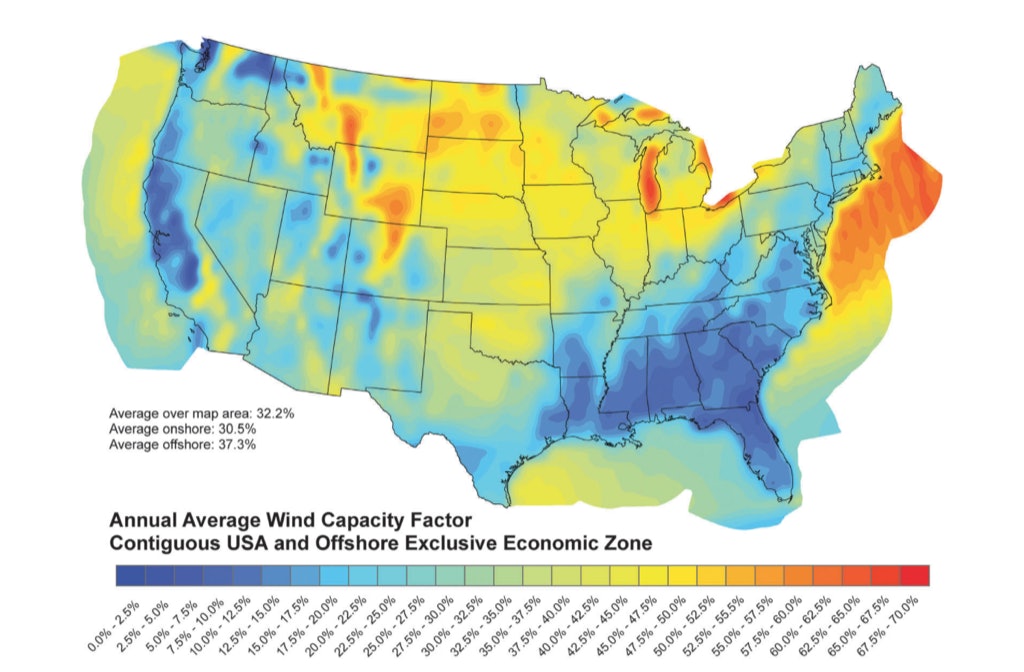Can the U.S. Achieve 100% Renewable Energy by 2050?

The future of renewable energy is upon us.
According to a new study published by a team of Stanford researchers, it is possible for the United States to make an 80% transition to renewable energy by 2030 and run exclusively on renewable sources by 2050. The researchers developed an extensive set of roadmaps to outline what each of the fifty states needs to do in the next 35 years in order to make this forecast a reality.
The researchers started by examining current energy demands on a state-by-state basis and then calculating how those demands will likely evolve over the next few decades. They split energy use into four distinct sectors – residential, commercial, industrial, and transportation – and calculated fuel demands under the assumption that all fuel usage would be replaced with electricity by 2050. According to the study, these replacements are already possible using existing clean technologies, including battery electric vehicles, hydrogen fuel cell vehicles, fully electrified heating and cooling systems, solar hot water preheating, and electric induction cooktops. Based on their calculations, researchers found that these conversions would reduce conventional 2050 U.S.-averaged power demand by 39%.
The study then addressed the issue of how to power the new electric grid. Each state’s new power demands are to be met using only the most readily available renewable energy sources. For instance, states that get more sunlight could take advantage of solar power, coastal states could make use of offshore wind farms, and states with major rivers could use hydroelectric power. An interactive map provides details for each state here.

States with higher wind capacity factors can take advantage of wind power and offshore wind farms.
If everything goes according to plan, the study predicts an 80% transition to renewable energy by 2030, and a full conversion by 2050. Wind and solar energy are projected to grow extremely rapidly over the next three and a half decades in order to offset the reduction in fossil fuels and nuclear energy. Though energy demand will increase, the overall supply needed will decrease due to improved energy efficiency.

So how much will all of this cost? According to the research, the initial cost of the changes would be fairly significant, but since sunlight and wind are free, the overall cost will spread out in the long run and roughly equal the cost of current fossil fuel infrastructure, maintenance, and production.
In addition, the shift to renewable energy would create approximately 3.9 million construction jobs and 2.0 million operation jobs, which would offset the loss of 3.9 million jobs in conventional energy. The country would also be healthier, since switching away from fossil fuels would help prevent approximately 62,000 premature deaths per year today due to air pollution. The plan would further eliminate around $3.3 trillion per year in global warming costs to the world from U.S. emissions. Overall, the average US citizen would personally save around $260 per year in energy costs, $1500 per year in health costs, and $8300 per year in climate costs.
The most significant barriers to implementation are political and social, not technical or economic. According to the study, most people are unaware of what changes are possible and how they will benefit from them, and those who have a financial interest in the current energy industry resist change. In order to overcome these barriers, state leaders should take a close look at their respective roadmaps and people must be informed about what is possible.


